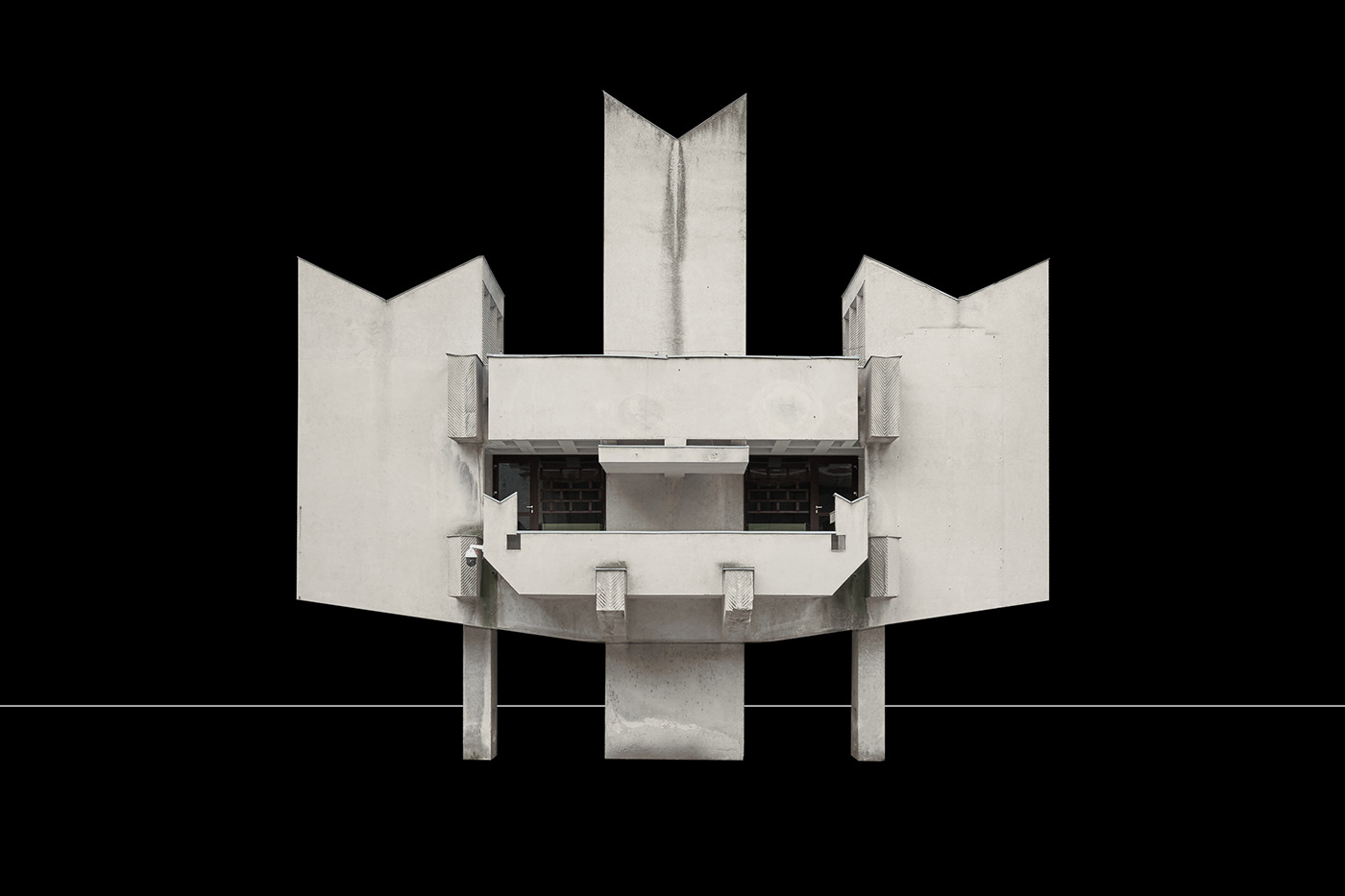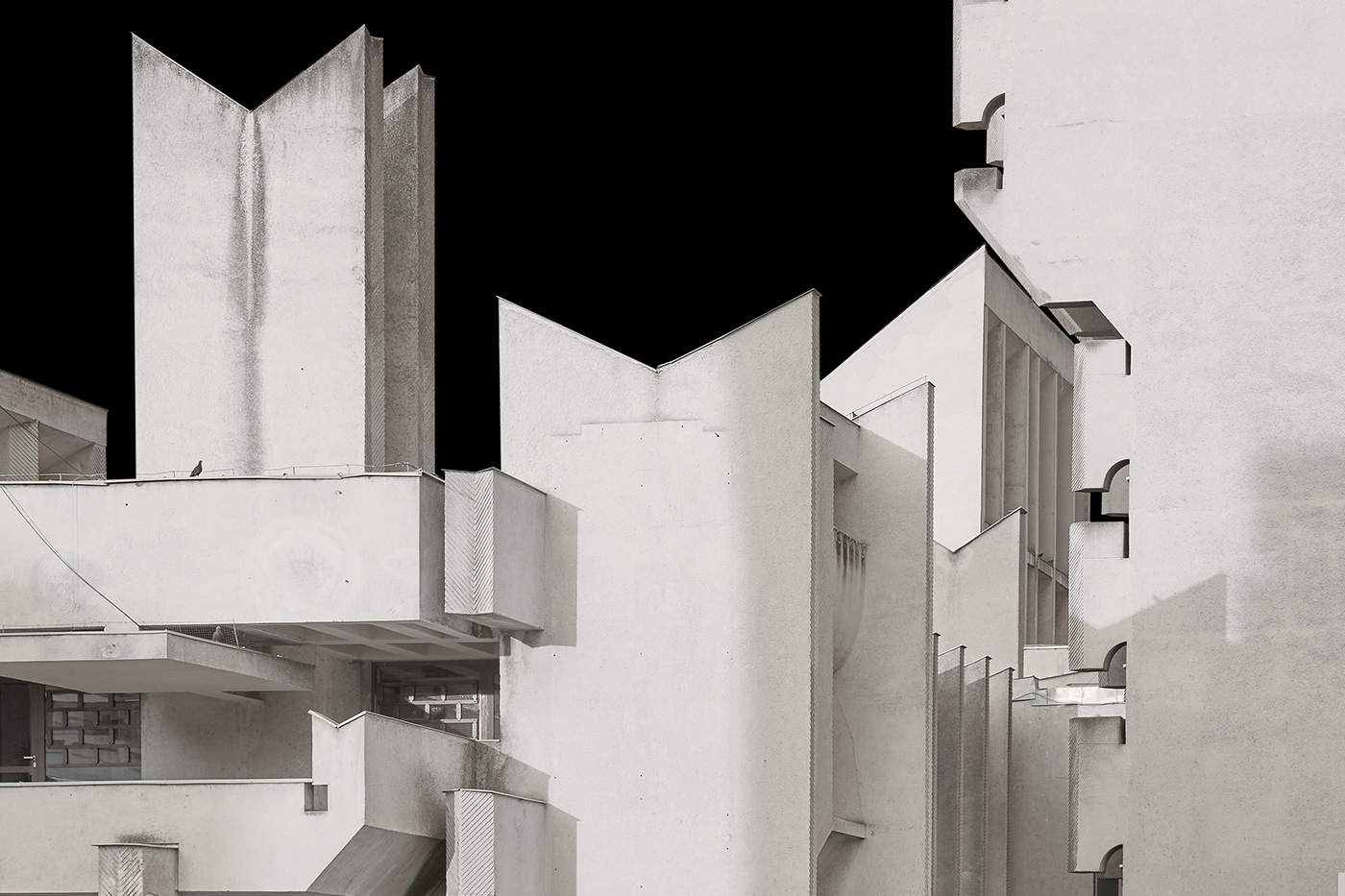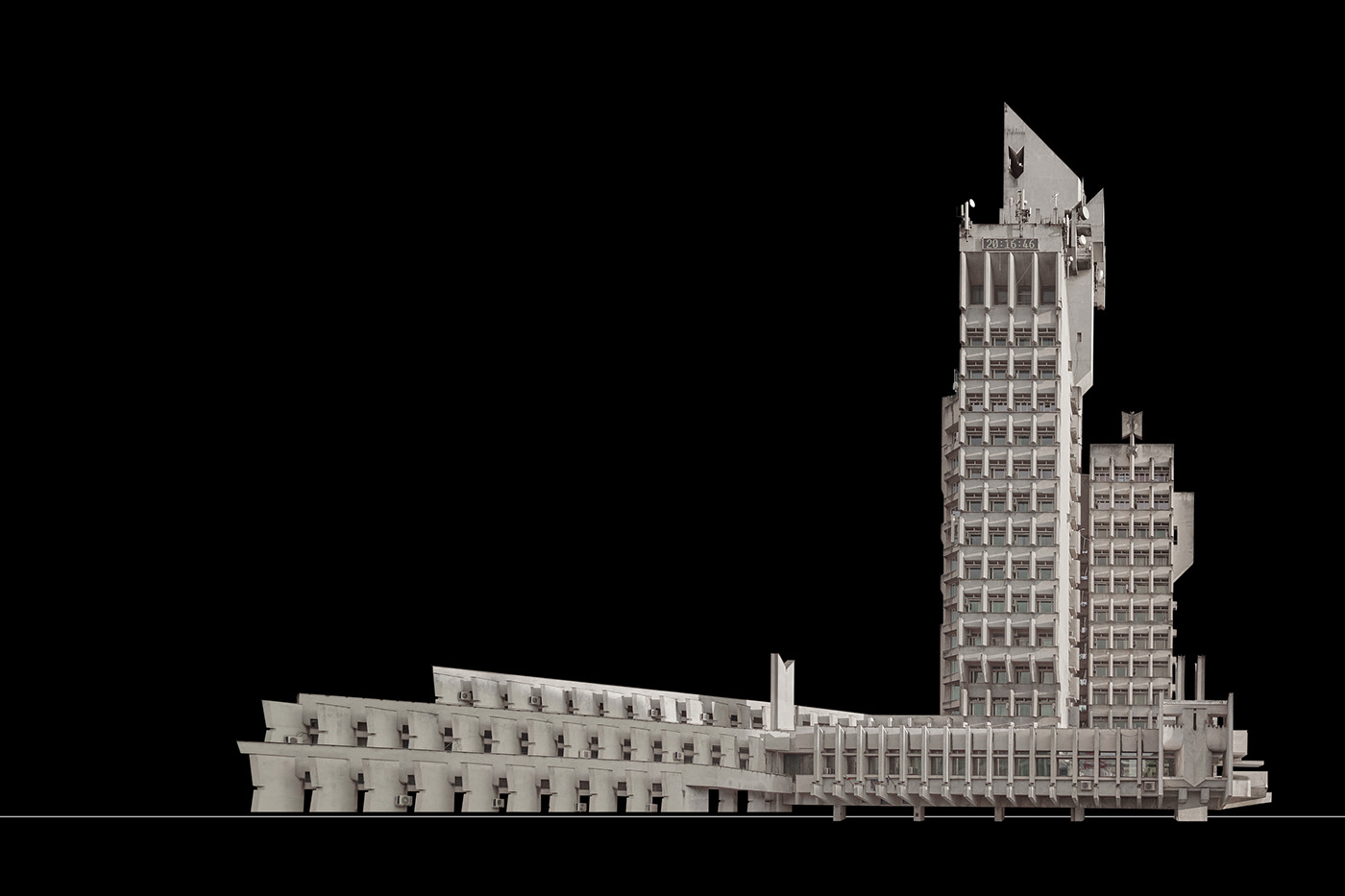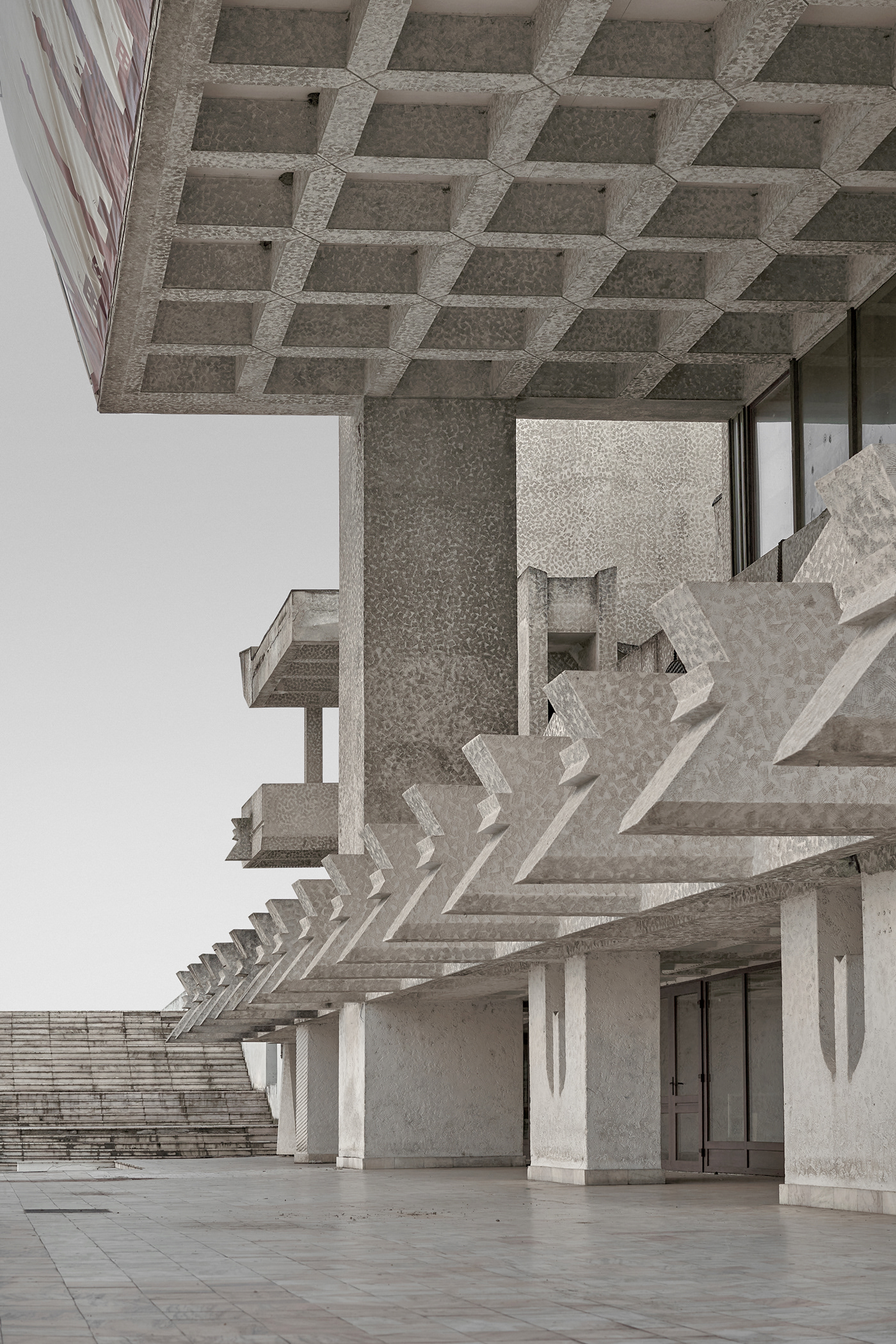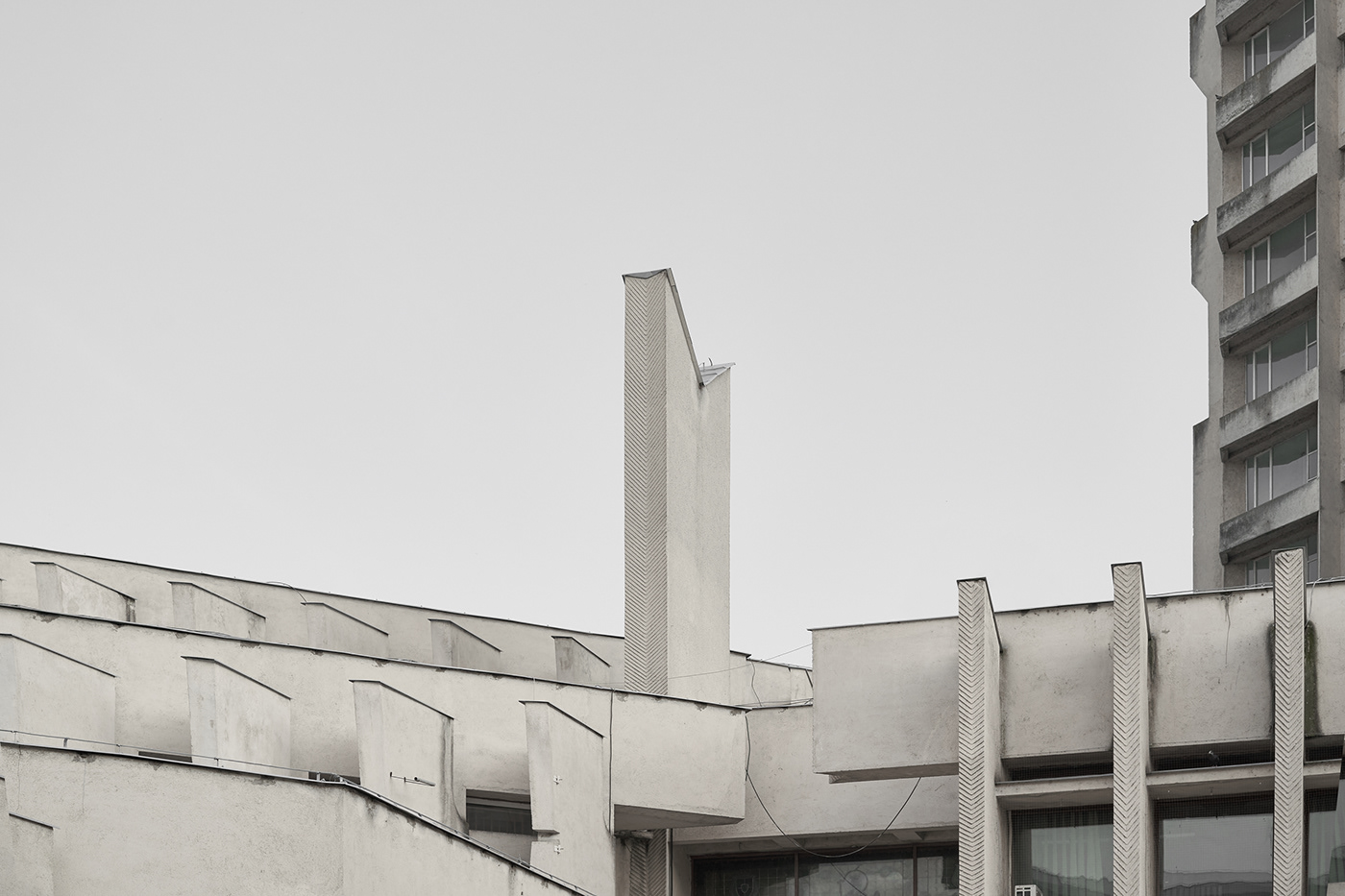
In the 1960s, Satu Mare experienced a period of infrastructure development under the communist regime. The Romanian Communist Party wanted to build a new city center with a building that would be a new landmark for the city.
Thus, in 1972, construction of the building began, the main architect being Nicolae Porumbescu of Iaşi, assisted by Ludovic Gyüre of Satu Mare.
Porumbescu’s personal style was explicitly related to Brutalism at the time. He called it “this great movement of rebelliousness, of professional ethics.” He cited, among others, Paul Rudolph and Le Corbusier. “I care very much about the Brutalists,” he declared. The Satu Mare ensemble—with its overstated structural elements, raw heavy materiality, intricate spatial articulations, and pedestrian “streets in the sky”—deserves the Brutalist label. Scratched surfaces reinterpret Le Corbusier’s béton brut or Paul Rudolph’s bush hammering. However, the theatrical effects (textured plaster, chopped-wood shaped beams and other folk-art simulations of constructive elements) go far beyond the mere exaggeration of a Modernistic concrete structure. The self-referential language and the elements of sheer decorativism, and last but not least its nationally specific rhetoric, situates this work at the intersection of Brutalism and Postmodernism.

